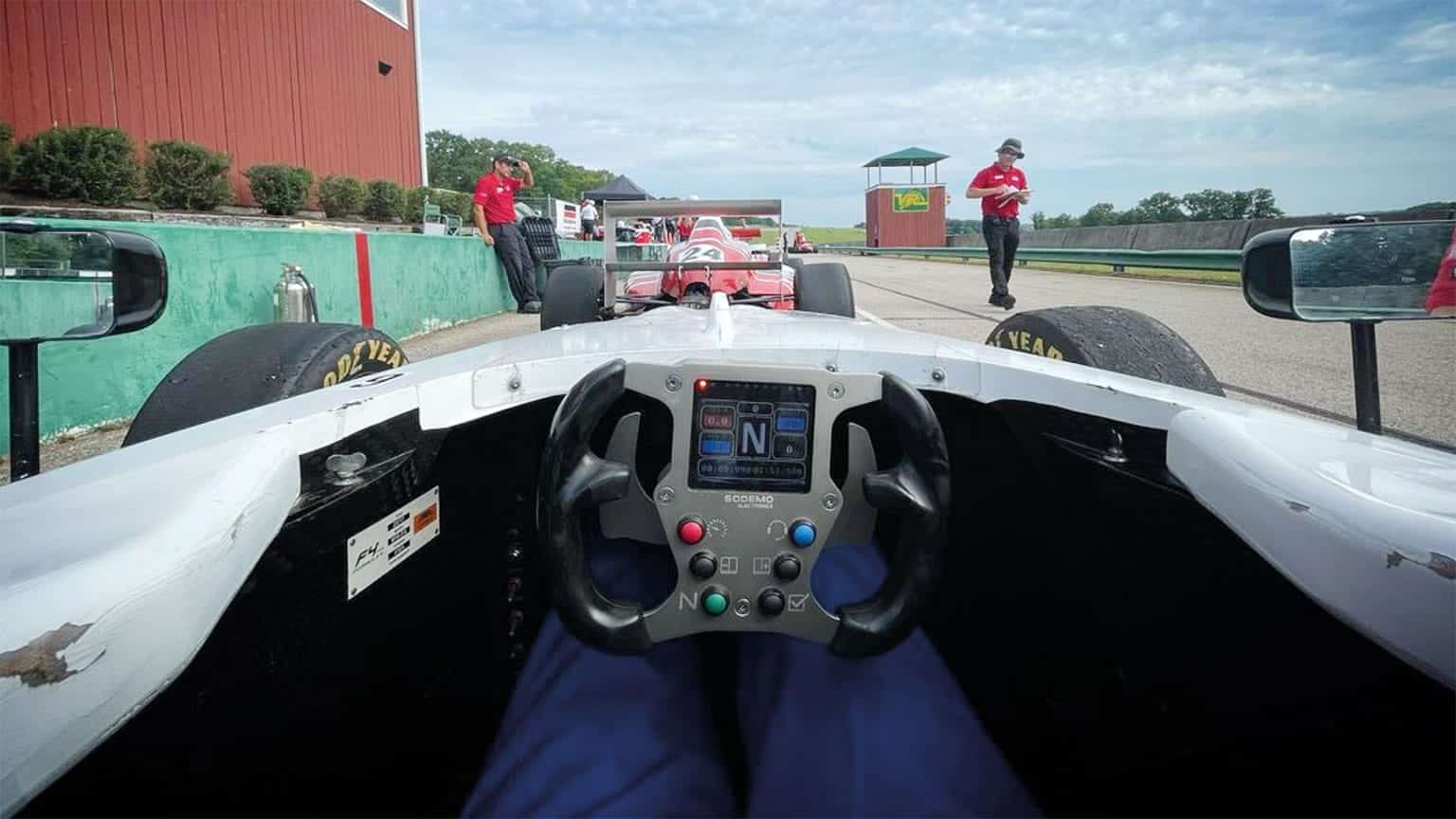Skip Barber: the school that breeds racing champions
F1 journalist and broadcaster Chris Medland can talk a winning drive, but how would he manage in the hot seat? We send him to racing school to find out
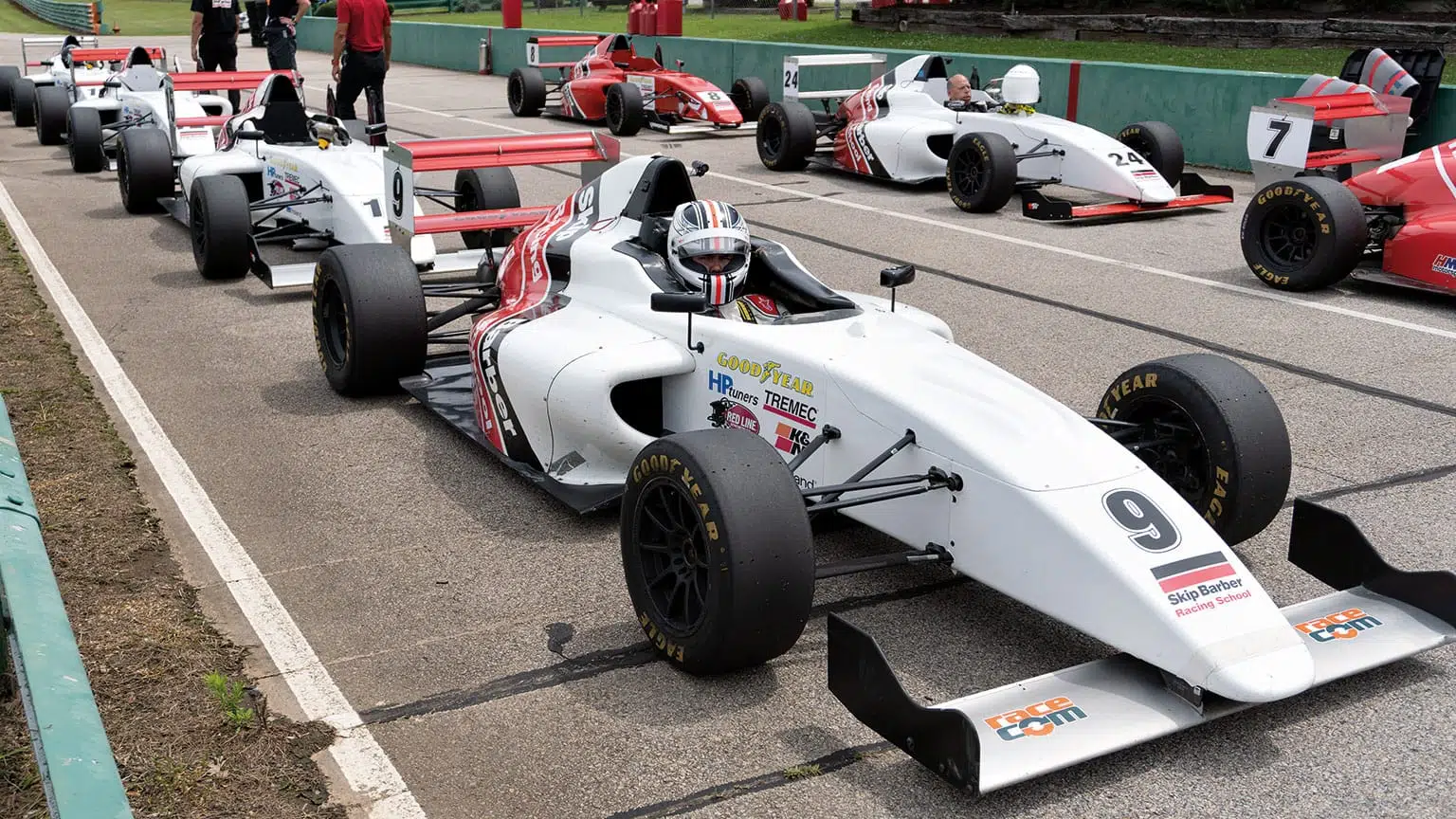
Skip Barber Race School
Virginia International Raceway is a proper driver’s circuit,” says Tom Kristensen. “It’s old-school and has a great rhythm because of its dirt track history. I never actually raced there – it can’t host the biggest races – but in my book I said I consider it one of the best circuits in the world. It takes a few laps to get your head around it. You feel like you’re near but you’re always looking for the perfect lap. And it bites…”
I don’t mind admitting I wasn’t completely aware of the challenge of VIR, but when Kristensen is so keen to sing the track’s praises, you sit up and take notice. My ignorance was – in my opinion – understandable because my focus had been less on the track itself and more on the car I was going to get to grips with.
Motor sport is not a cheap pastime at any level, but karting provides a relatively achievable way of getting started. For many, it’s the only way of ever going racing, with group activities from stag and hen parties to corporate getaways sometimes providing the opportunity to unleash your driving talent on a racetrack.
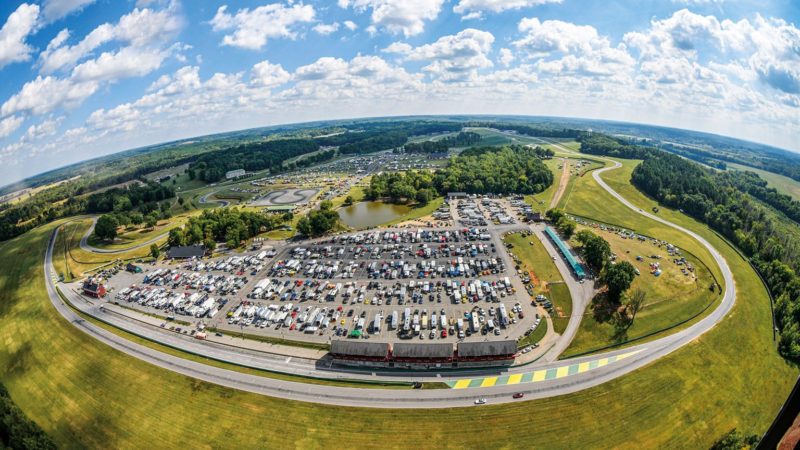
Virginia International Raceway is just one of a number of North American tracks Chip Barber Racing School uses
Skip Barber Race School
For those who take it a bit more seriously, years in karting can then lead to a step into the car racing world, and that means going from that small, relatively simple machine to a full-blown single seater.
“To get close to the limit, under braking is one of the hardest things”
“It is a very big step,” Lando Norris admits. “A lot of things are very different and brand new. Apart from the fact that it costs a heck of a lot more, I think the main things that you have to get used to and understand are the aerodynamic side of it and the effects of it. So how late you can brake – the first time you get in you don’t realise how late you can brake –and how impressive high-speed corners are, these are some of the biggest challenges.”
And Norris is well-placed to judge what I’m about to do, as the Formula 4 cars that are being prepared in the golden early morning light by the Skip Barber Racing School are of the same spec that he won the F4 British Championship – then MSA Formula – in 2015.
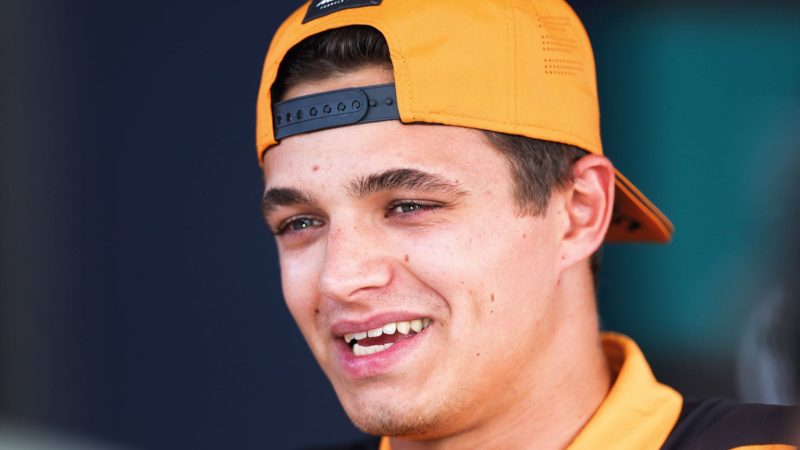
Lando Norris has Formula 4 experience
Getty Images
It has taken me three flights to get from the Austrian Grand Prix to Virginia – via Brussels, Washington and Raleigh before a drive into the countryside from North Carolina – and doing so the day after the race at the Red Bull Ring means I haven’t quite processed what I’m about to do.
Standing on the colonial balcony of The Lodge at VIR, I’ve got a view of the track’s tricky Turn 5 and 6 section to greet me as I make my way to an early sign-on. The lack of any run-off at all – just well-kept grass – reminds me of a word Norris regularly used in preparing me for the challenge: risk.
“I think to get close to the limit – to what a professional racing driver does – under braking is one of the hardest things. Braking sets up so many aspects of the whole corner.
“Driving a car and getting to learn cornering speeds and what the limit of the car is in simple corners, I think you can understand quite quickly. You know when to lift earlier to power through and focus on exits and things like that, but braking is when it gets tougher because it’s when more risk comes into play. Taking risks and finding that limit is difficult.

Before squeezing into a single-seater, drivers can gain track time with the school’s Mustangs, or road-going muscle cars
Skip Barber Race School
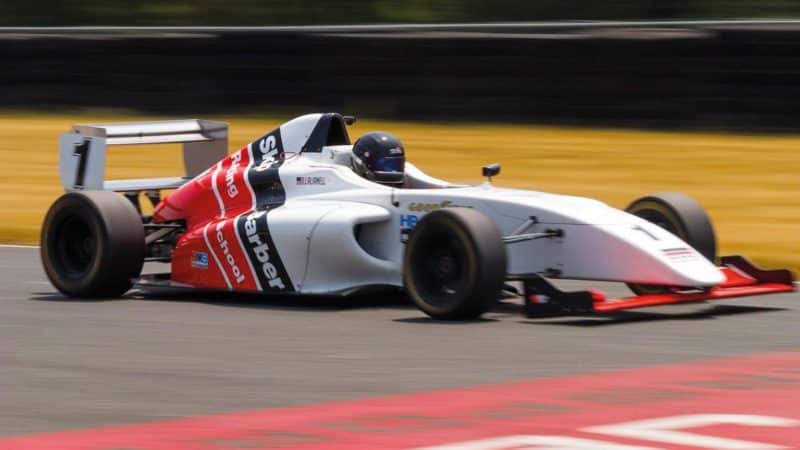
From a muscle car, the next seat for Chris was a Formula 4 racer, with its own set of skills. To a newcomer, it can be a draining experience
Skip Barber Race School
“In karting you can have a very good feeling of braking. You lock up the rear tyres a little bit and you learn to understand how to then brake into the corner. But obviously Formula 4 and car racing have the additional front brakes, and you need to realise that you can’t just brake and turn at the same time.
“With the aerodynamic side of it you have to hit the brake hard initially but then have gentle bleed-off. Finding these limits and how to brake on the limit, even while just keeping the car straight, is difficult. But then as you start to release the brake you have to judge the timing of when to start to turn for the car to accept it. It’s complicated to put the timings into place with so many things going on.
“You could be a natural, mate. You could get in and know exactly what to do!”
A natural is certainly not what I’m expecting to be. I’ve driven enough go-karts relatively quickly to feel like I can start to explore limits, but experience of a single-seater can be measured in minutes.
I’m in a good place to learn, at least. The Skip Barber Racing School is an American institution, and one of the world’s biggest motor sport training grounds. With schools taking place at venues from Laguna Seca to Circuit of the Americas, thousands of drivers develop their skills in the set-up each year.
Founded by former Formula 1 driver Skip Barber – who had success in American single-seaters – the school is enjoying a renaissance after filing for bankruptcy in 2017 (although this had no connection to Barber, who sold the school in its entirety in 1999) before being taken over by DeMonte Motorsports.
“The Skip Barber Racing School is one of the most important driver development programmes in the United States since 1975,” chief marketing officer Dan DeMonte says. “We have 395,000 alumni. Many of those people are beginners or novices, but today 50% of all IndyCar drivers are graduates and 25% of all NASCAR drivers. We’ve won podiums in every race series in the world, most recently in Formula 1 as Sergio Pérez is a graduate.”
When Pérez came to Skip Barber, it was to race. I’m a long way from being entrusted with that, but the point of the school is to learn how to race. So to build up the fundamentals, after an hour of classroom teaching – including ‘string theory’ that shows how much you need to adjust steering angles in response to pedal pressure – the first practical lesson comes on the skidpan.
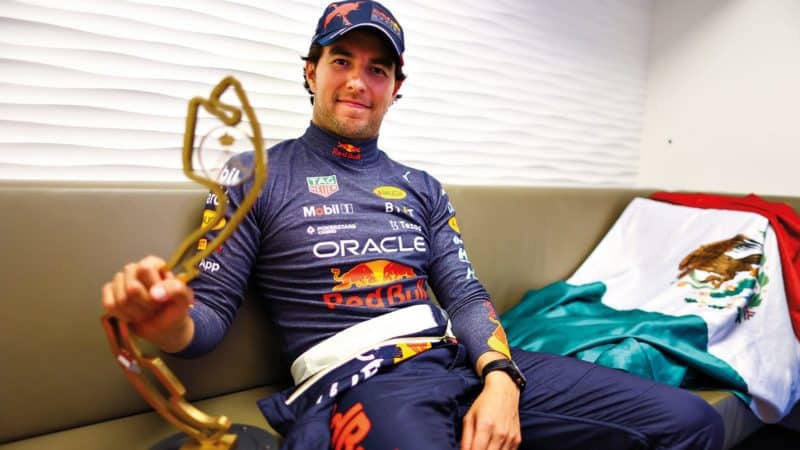
Sergio Pérez is a graduate
Getty Images
“What we’re showing you is the lack of grip with a drift ring,” instructor Jason Rabe says. “We’re teaching you what to do. So CPR – correct, pause, recover – once you get in a slide. We want to get you used to looking out the side windows, not the windscreen. It makes you constantly look where you want to go, and then your hands and feet will follow.”
Rabe is one of the many professional drivers who work at the school, and the IMSA competitor is sharing the skidpan with Sabré Cook, who races in W Series.
From there it was an upgrade to a Dodge Charger for some cornering and threshold braking on a short circuit, but that’s all far easier from a high seating position and with ABS. By the time I’m kitted out and have had a seat fitting (in this case, some extra padding taped up), it’s lunchtime and the rest of the driving will be done in F4 cars
“I’m in tune with the car, looking a number of corners ahead”
It’s only a lead and follow exercise to get started with but there’s plenty to take in. The first thing that hits you is how tight the cockpit is, with extremely firm pedals tough to switch between. Left foot braking is fine but the heavy clutch means you have to switch your feet to operate either throttle and clutch, throttle and brake or brake and clutch at any one time.
Then there’s the brutality of the gearshifts, with the engine noise duping me into early shifts in both directions. But the steering isn’t overly heavy at first and the view is comfortingly familiar as you look beyond a multifunction wheel with digital display to the top of some racing slicks.
This is when I get to feel what Kristensen was on about. The pitstraight ends with a solid braking zone into a wide right-hander, before two medium-speed lefts lead into a left-right sequence that offers little room for error.
A small set of esses give way to a straight and then a much bigger, uphill, flat-out sequence that feels incredible, before a downhill left through Turn 10, a tough fast right-hander that tightens at ‘Oak Tree’ and then a long straight. One of the trickier braking zones follows with a left kink before a medium-speed right, then two downhill lefts lead into a final right-hander where the car compresses at the apex before accelerating to the line.
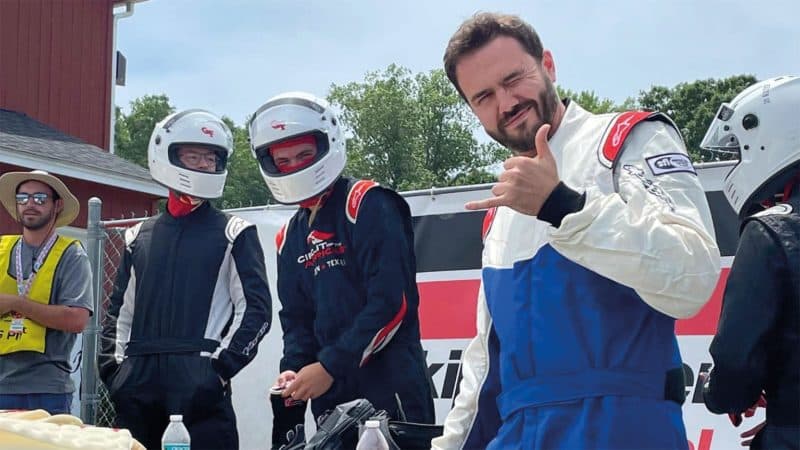
A lot to take on board and some fellow drivers would lose control of the car on track
Skip Barber Race School
Much of how that really feels I learn on day two, as a stop-box exercise sees us circulating independently but stopping on the back straight for feedback.
“You’ve got to brake harder, man,” chief administrative instructor Eric Powell pleads. “Your lines are nice but really stamp on that brake at first. So far you’re basically letting the engine and aero do the braking.”
After that first session, it’s my turn to watch trackside with Powell to learn from others’ mistakes. But we don’t get past the out laps as one driver spins off at Turn 1 (trying to brake with the right foot and catching the throttle with it), before another damages both ends in the wall at the quicker Turn 6.
Powell’s distraught as he learns another driver went off on cold tyres and damaged the floor, so a dressing down follows for everyone on the course from president of series and racing schools Gerardo Bonilla.
“If you’re trying to go fast, you’re already making a mistake,” Bonilla says. “Speed comes from experience, and good experience comes from following the process.”
The offs are reminders that these cars will bite if you ask too much. So when I next head out on track for another stop-box session my focus is all on the big braking zones.
Hitting the pedal so hard I’m bracing myself against the steering wheel is fine as an initial impact, but I struggle with bleeding off too quickly and needing to get back on the pedal. Quick hands mean the car never swaps ends, but it doesn’t exactly instil confidence.
After losing morning track time, two runs are attempted in the afternoon. But just as I leave the pitlane for run two some big splashes hit my visor and we’re immediately pulled in. We’re only using slicks, so the day comes to a premature end.
Then comes the biggest period of learning: overnight. While sleeping, everything gets processed and I’m amazed how much more natural everything feels on the first run of the final day. I’m in tune with the car, looking a number of corners ahead and not having to think about my footwork.
At this point we’re practising overtaking a static ‘car’ (cones) by diving down the inside into two braking zones. That’s still familiar enough, but when we practice two-wide rolling starts the heart rate goes up another step, even if we keep it clean before being released for our first free lapping sessions.
And this is when it all starts to hit me. No stop-box means a flat out back straight over a mile long, and alongside the ever-louder engine, even the air resistance buffeting my helmet and the car means I can’t relax. Pushing the speeds higher, concentration is so key but it starts to drop and I keep having to remind myself “Look up” to make sure I’m planning ahead rather than reacting to the now.
“You’re braking much better, but as you’re hitting them harder you’re starting to pinch off the corner early,” Cook feeds back. “Then if you’re dealing with being off-line in one corner you’re not thinking about the next, and it will all come too quickly in these cars. You need to stay ahead of it.”
It’s good advice, but as I tire during the day it gets harder. The track heats up and loses grip, while I heat up and lose focus.
Aside from a lock-up when a much quicker (and younger) driver is in my mirrors, there are no errors, but there’s also no progress. I need another night’s sleep to process it.
I’m still light years away from the car’s potential in many corners, but only more seat time can address that. And that means money. But for all the money in the world some drivers may have, they still have to go out and do it to reach the top level, and for that they have my utmost respect.
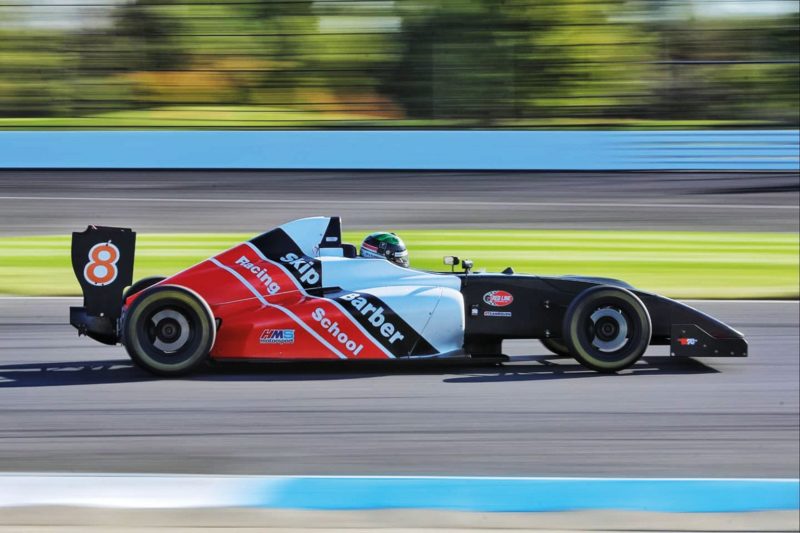
As the days progress, technique slowly develops helped by thorough feedback from tutors
Skip Barber Race School

